A day on the beach will never be dull if you are building a sandcastle to build. All you need to create your masterpiece is sand, water, a few carving tools, and buckets of imagination. Sand castles are typically made by children for fun, but there are also showstopping sand sculptures and site-specific installations that are created by artists to make a statement.
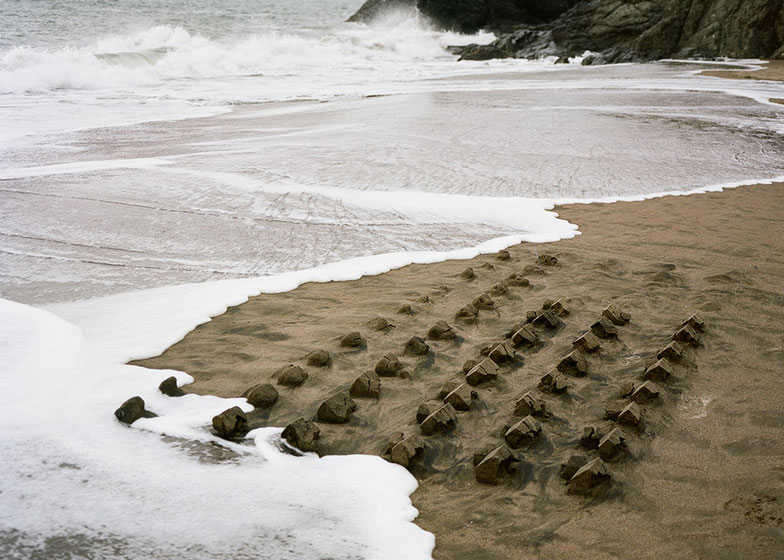
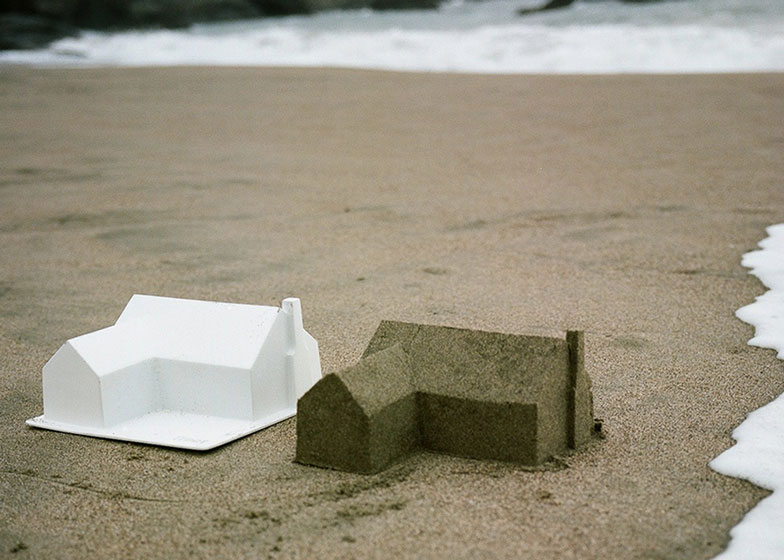
Master Plan by Chad Wright (also header image)
Although most of us have quite a conventional image in mind when thinking of a sandcastle, some artists turn to new unexpected forms. Reminiscing of his childhood in a typical American home, Californian designer Chad Wright has created a plastic mould that could be filled with sand to recreate post-war suburbia on the beach in a bid to explore the symbolism of the mass-produced tract house.
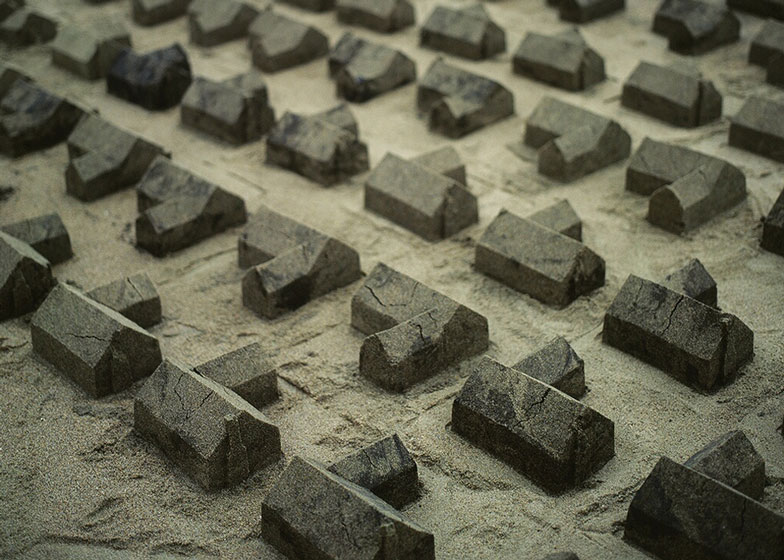
Master Plan by Chad Wright
This urban development typology, which the designer describes as “a symbol for the model American Dream,” involves building multiple similar houses on a tract land of land, which is subdivided into individual small lots.
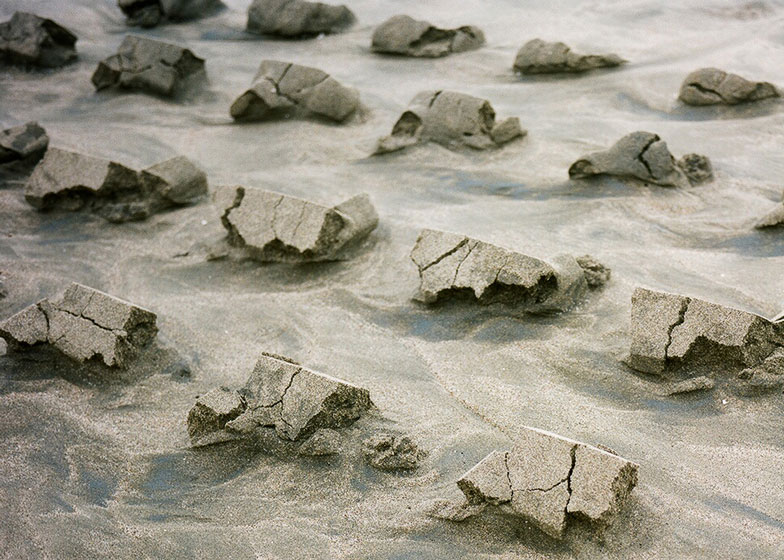
Master Plan by Chad Wright
As part of the project named Master Plan, Wright used the mould to create rows of identical L-shaped bungalow forms to mimic layouts of communities across the US. As the tide came in, the sandcastles were slowly eroded by the waves, leaving them cracked and crumbling.
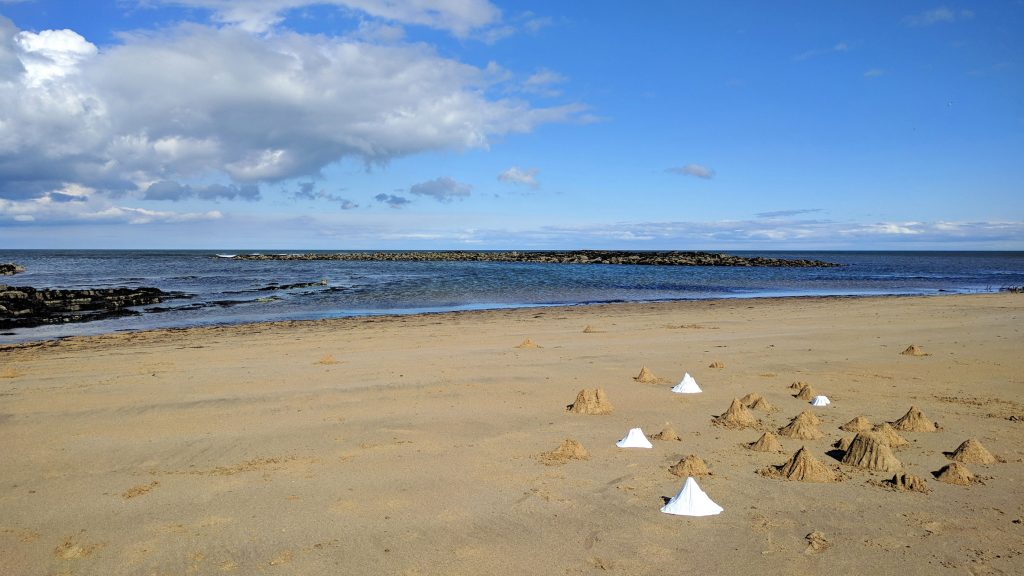
First There is a Mountain by Katie Paterson
The sand mould created by Glasgow-born Berlin-based artist Katie Paterson comprises a bioplastic bucket in the shape of world mountains: Mount Kilimanjaro (Africa), Mount Shasta (N.America), Mount Fuji (Asia), Stromboli (Europe) and Uluru (Oceania). Her participatory art project titled First There is a Mountain invited participants to sculpt beaches into mountains of sand to form micro-geologies across 25 UK beaches during sand-pail-building events over British Summer Time 2019. At the end of the project, the pails made from fermented plant starch were buried into the ground to decompose.
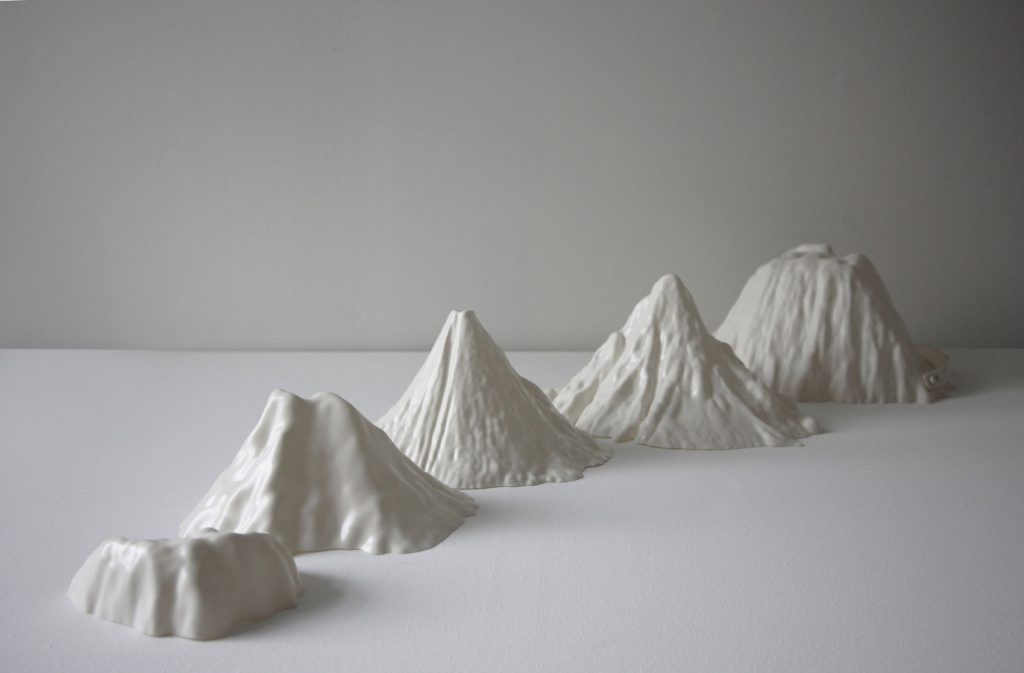
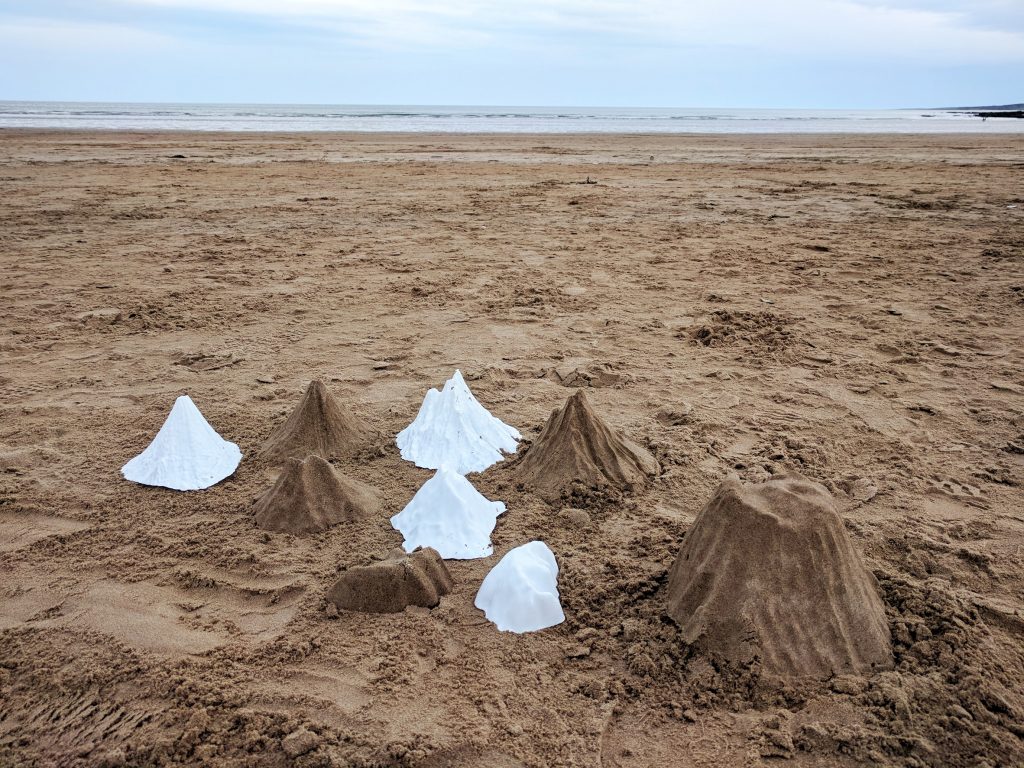
First There is a Mountain by Katie Paterson
The project was a product of years of planning, during which the artist carefully researched every single mountain range on earth and matched tide timetables, using data from NASA’s Shuttle Radar Topography Mission and the National Geospatial Intelligence Agency.
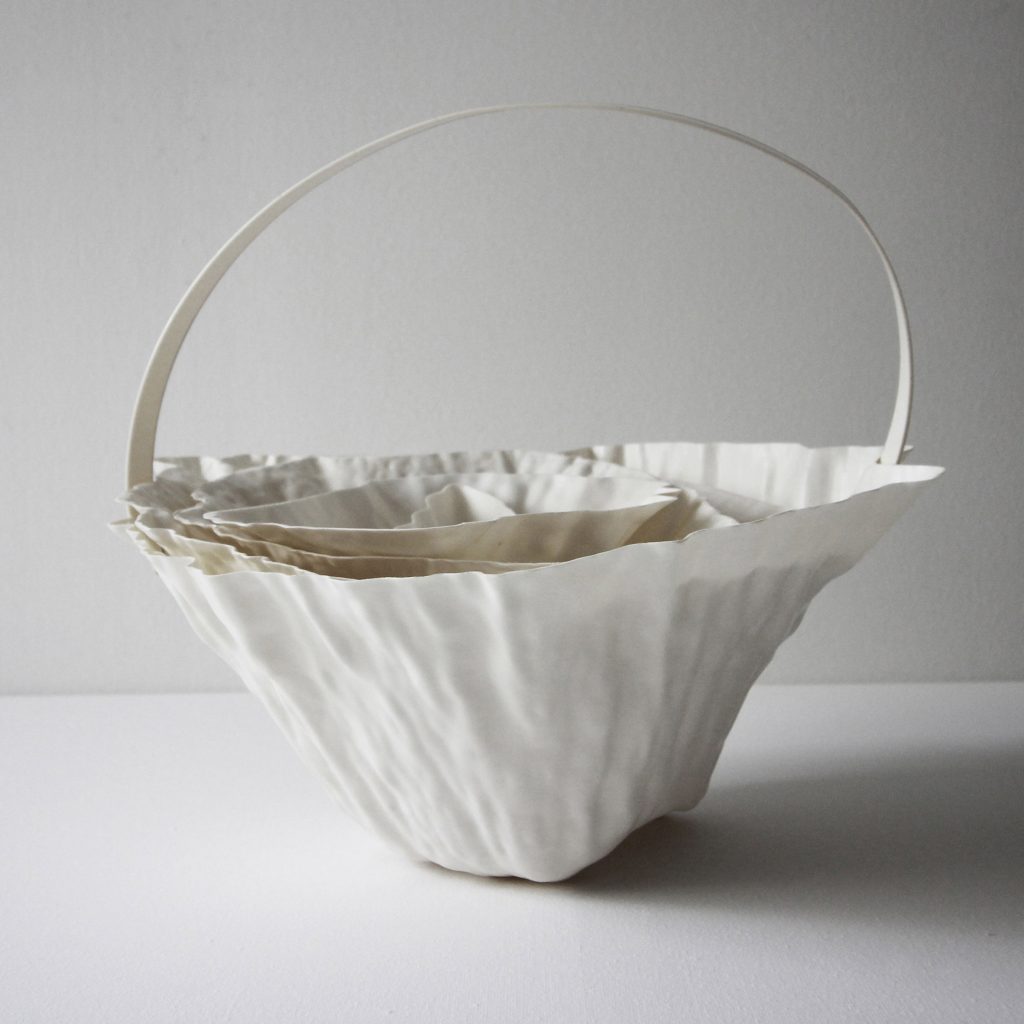
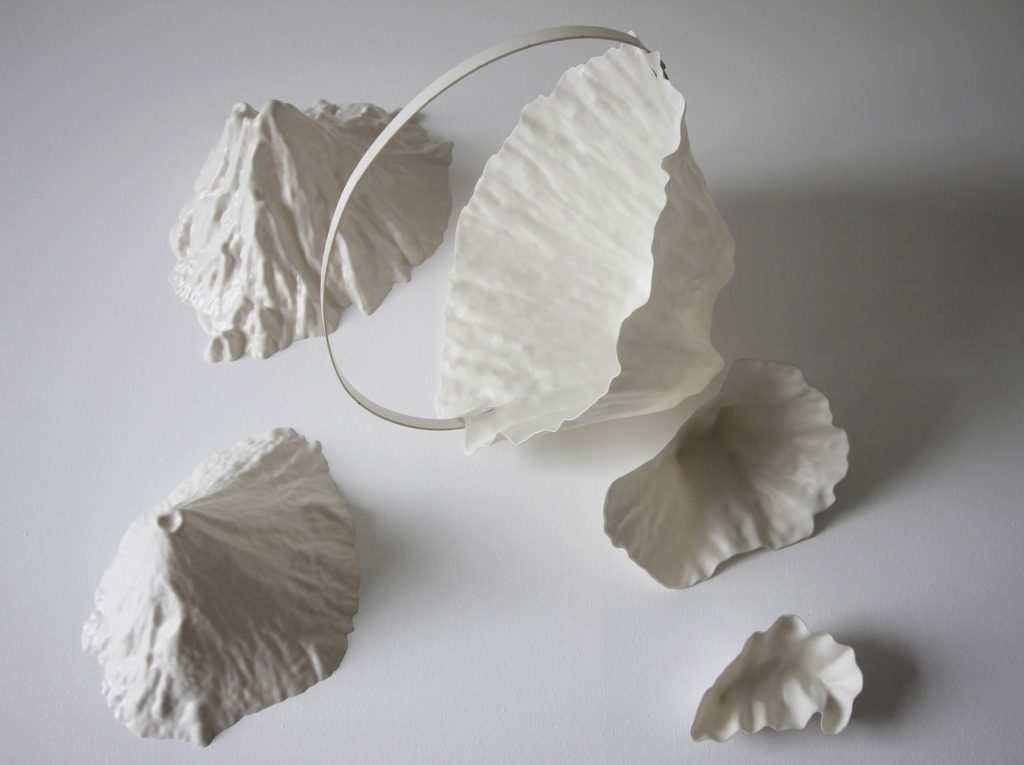
First There is a Mountain by Katie Paterson
Participants sculpted beaches into thousands of mountains of sand to form micro-geologies – serving as a poetic vehicle that connects diverse world mountains and highlights the interconnectedness of the world as well as the importance of acting together.
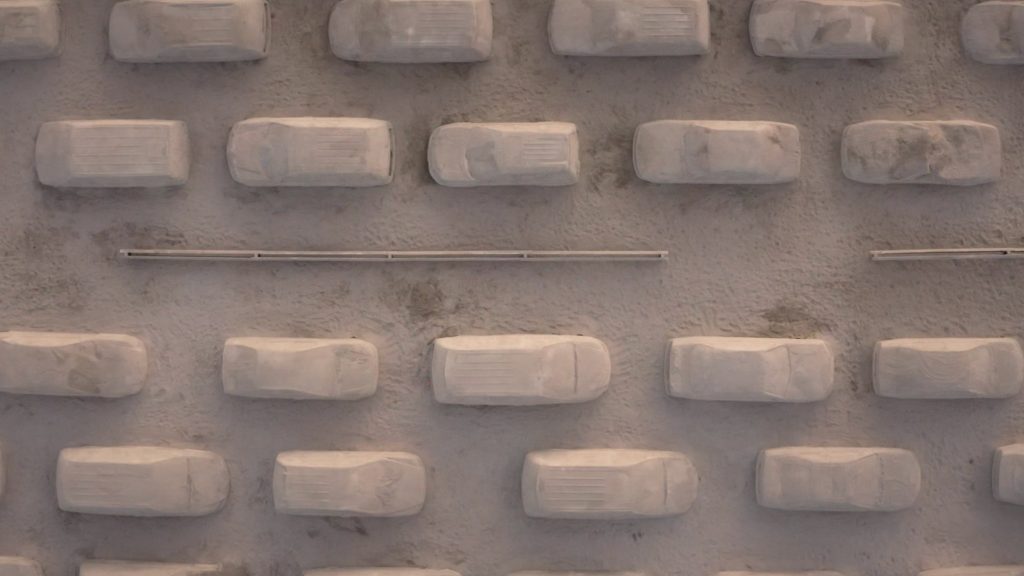
Order of Importance by Leandro Erlich
As well as connecting communities, Paterson hoped that the project would raise awareness of the erosion that is happening along the UK’s coastline, which is being accelerated due to climate change. Argentinian artist Leandro Erlich is also concerned by the climate crisis and its imminent consequences.
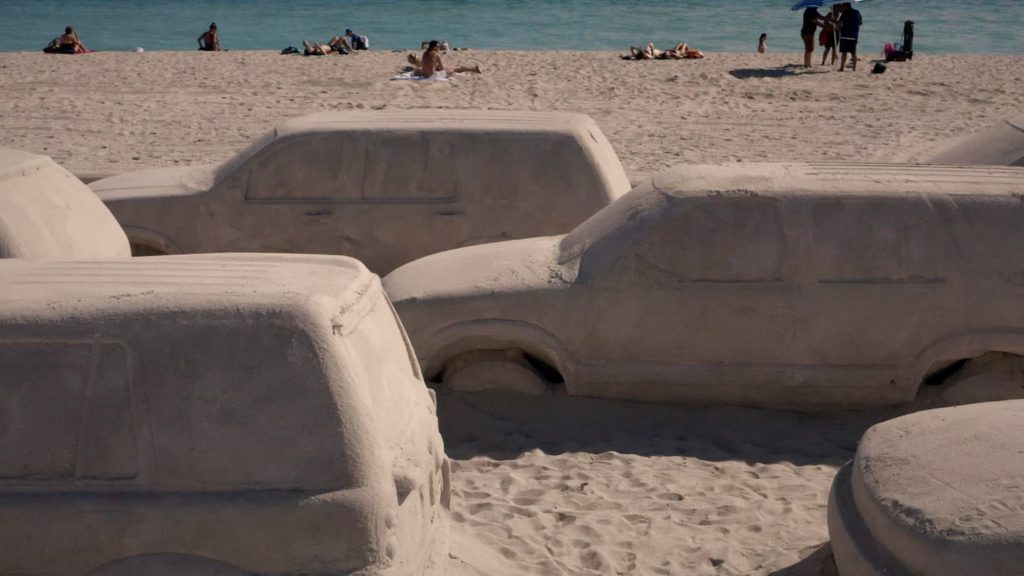
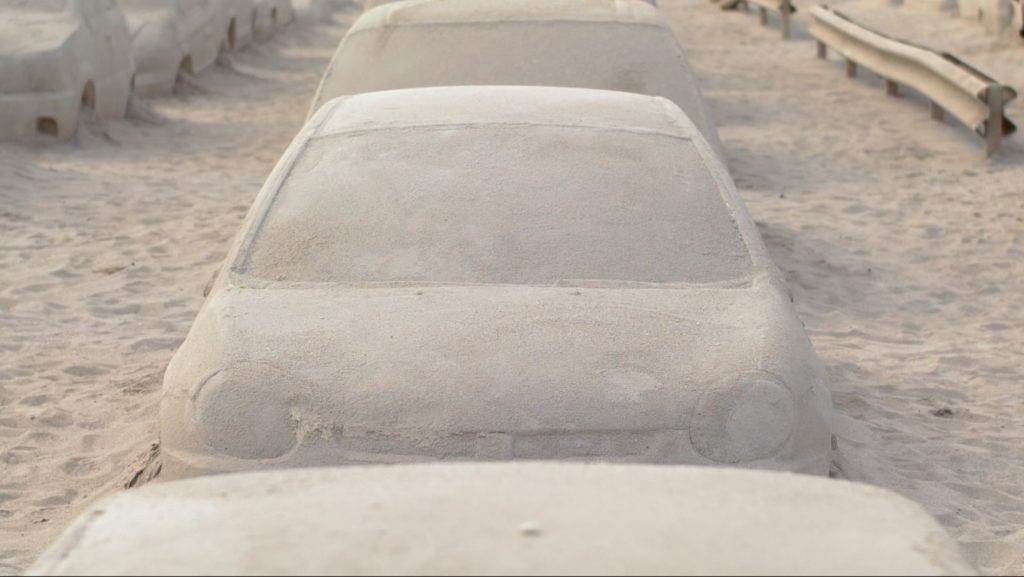
Order of Importance by Leandro Erlich
For Miami art week 2019, he created a temporary installation, dubbed the Order of Importance, which included 66 sand-covered sculptures of cars and trucks arranged in two rows split by a traffic divider to resemble a traffic jam.
The location was chosen purposefully for Miami is among a number of coastal cities threatened by rising sea levels caused by the climate crisis and is already prone to flooding.
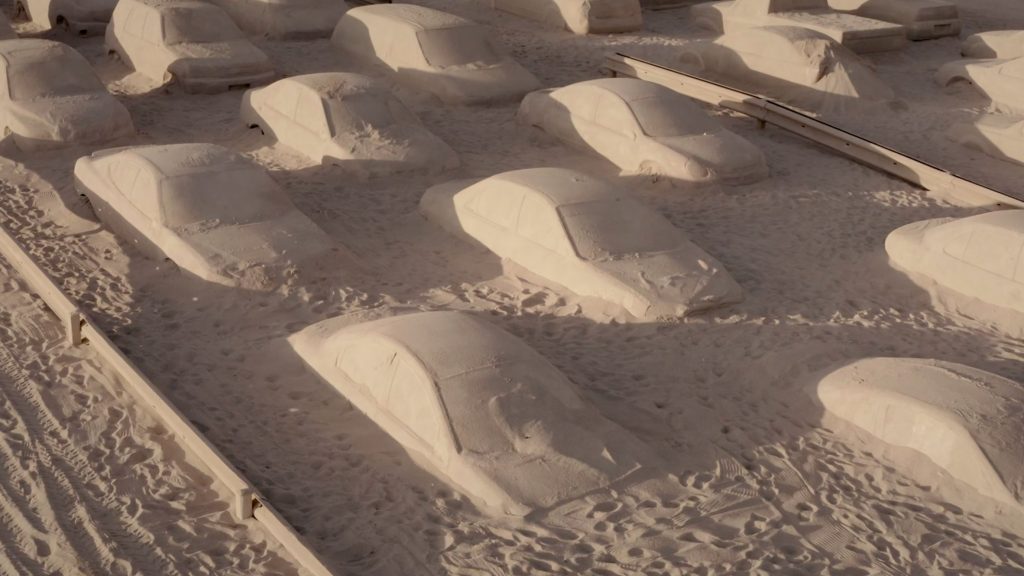
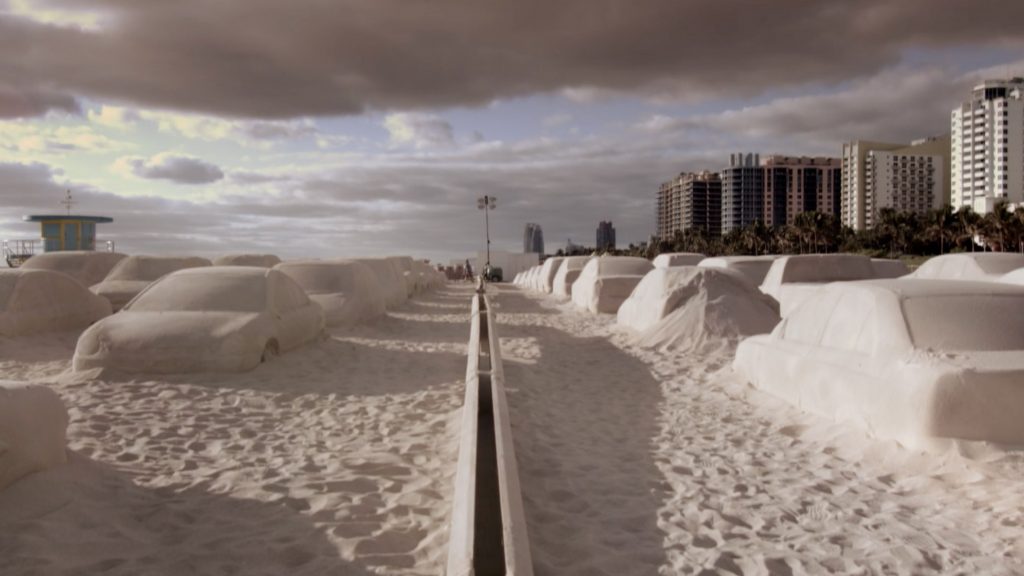
Order of Importance by Leandro Erlich
Most of the vehicles were partially buried in the sand, which was intended to give the effect that they are submerged – a reference to rising sea levels caused by global warming. This created a striking image of “a contemporary Pompeii,” or a future relic.